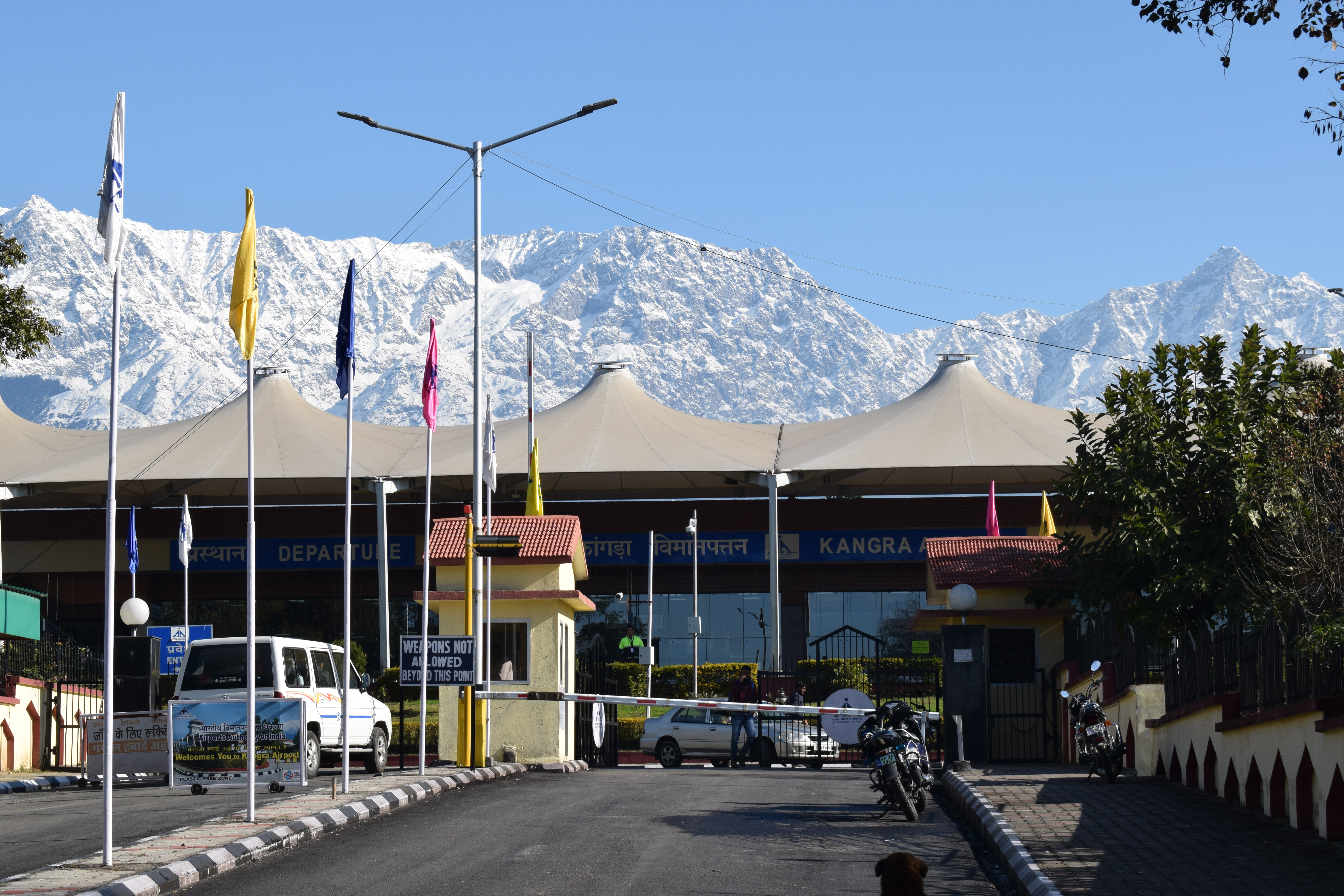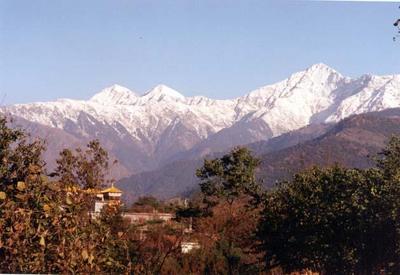|
Battle Of Chach
The Battle of Chach or Battle of Chaach was fought in 1008 AD between the Ghaznavid army of Mahmud of Ghazni and the Hindu Shahi army of Anandapala, near Hazro, resulting in the latter's defeat. This left the north Indian region vulnerable to further invasions. Background After having invaded the Principality of Bhatiya (1004-5) and the neighbouring Emirate of Multan (1006), Mahmud mounted an invasion of the Hindu Shahis circa December 1008, for reasons which are not clear. Correspondence shows that Anandapala actually seems to have had favourable dispositions towards the Muslims. Mahmud left Ghazni with his force on December 31, 1008, for a spring campaign into India. This was his sixth expedition into India. A huge army, composed of the Hindu Shahis and allied ''Rajas'' was placed under the command of Anandapala's son (Trilochanapala) to meet the invasion. Trilochanapala failed to prevent Mahmud's troops from crossing across the Indus, and Mahmud then set out for the plains o ... [...More Info...] [...Related Items...] OR: [Wikipedia] [Google] [Baidu] |
Mahmud Of Ghazni
Yamīn-ud-Dawla Abul-Qāṣim Maḥmūd ibn Sebüktegīn ( fa, ; 2 November 971 – 30 April 1030), usually known as Mahmud of Ghazni or Mahmud Ghaznavi ( fa, ), was the founder of the Turkic Ghaznavid dynasty, ruling from 998 to 1030. At the time of his death, his kingdom had been transformed into an extensive military empire, which extended from northwestern Iran proper to the Punjab in the Indian subcontinent, Khwarazm in Transoxiana, and Makran. Highly Persianized, Mahmud continued the bureaucratic, political, and cultural customs of his predecessors, the Samanids. He established the ground for a future Persianate state in Punjab, particularly centered on Lahore, a city he conquered. His capital of Ghazni evolved into a significant cultural, commercial, and intellectual centre in the Islamic world, almost rivalling the important city of Baghdad. The capital appealed to many prominent figures, such as al-Biruni and Ferdowsi. Mahmud ascended the throne at the age of 27 ... [...More Info...] [...Related Items...] OR: [Wikipedia] [Google] [Baidu] |
Mardan
Mardān (Pashto and ; Urdu ; Pashto: ) is a city in the Mardan District of Khyber Pakhtunkhwa Province, Pakistan. Located in the Valley of Peshawar, Mardan is the second-largest city of Khyber Pakhtunkhwa (after Peshawar). It is a fast-growing city that experienced a population boom in the latter half of the twentieth century. Around 1800 BCE, the area around Mardan was part of the homeland of the Gandhara grave culture. Rock edicts of the ancient Indian King Ashoka in the nearby Shahbaz Garhi, written in the right-to-left Kharosthi script, date from the Mauryan period (mid-200s BCE) and represent the earliest irrefutable evidence of writing in South Asia. The nearby Takht-i-Bahi which has remains of an ancient Buddhist monastery was listed as a UNESCO World Heritage Site in 1980. History Mardan is located in a region rich in archaeological sites. In 1962, the Sanghao Caves were discovered outside of Mardan, which yielded artefacts from the Middle Paleolithic period, ove ... [...More Info...] [...Related Items...] OR: [Wikipedia] [Google] [Baidu] |
Conflicts In 1008
Conflict may refer to: Arts, entertainment, and media Films * ''Conflict'' (1921 film), an American silent film directed by Stuart Paton * ''Conflict'' (1936 film), an American boxing film starring John Wayne * ''Conflict'' (1937 film), a Swedish drama film directed by Per-Axel Branner * ''Conflict'' (1938 film), a French drama film directed by Léonide Moguy * ''Conflict'' (1945 film), an American suspense film starring Humphrey Bogart * ''Catholics: A Fable'' (1973 film), or ''The Conflict'', a film starring Martin Sheen * ''Judith'' (1966 film) or ''Conflict'', a film starring Sophia Loren * ''Samar'' (1999 film) or ''Conflict'', a 1999 Indian film by Shyam Benegal Games * ''Conflict'' (series), a 2002–2008 series of war games for the PS2, Xbox, and PC * ''Conflict'' (video game), a 1989 Nintendo Entertainment System war game * '' Conflict: Middle East Political Simulator'', a 1990 strategy computer game Literature and periodicals * ''Conflict'' (novel) ... [...More Info...] [...Related Items...] OR: [Wikipedia] [Google] [Baidu] |
Battles Involving The Ghaznavid Empire
A battle is an occurrence of combat in warfare between opposing military units of any number or size. A war usually consists of multiple battles. In general, a battle is a military engagement that is well defined in duration, area, and force commitment. An engagement with only limited commitment between the forces and without decisive results is sometimes called a skirmish. The word "battle" can also be used infrequently to refer to an entire operational campaign, although this usage greatly diverges from its conventional or customary meaning. Generally, the word "battle" is used for such campaigns if referring to a protracted combat encounter in which either one or both of the combatants had the same methods, resources, and strategic objectives throughout the encounter. Some prominent examples of this would be the Battle of the Atlantic, Battle of Britain, and Battle of Stalingrad, all in World War II. Wars and military campaigns are guided by military strategy, whereas bat ... [...More Info...] [...Related Items...] OR: [Wikipedia] [Google] [Baidu] |
1008 In Asia
1 (one, unit, unity) is a number representing a single or the only entity. 1 is also a numerical digit and represents a single unit of counting or measurement. For example, a line segment of ''unit length'' is a line segment of length 1. In conventions of sign where zero is considered neither positive nor negative, 1 is the first and smallest positive integer. It is also sometimes considered the first of the infinite sequence of natural numbers, followed by 2, although by other definitions 1 is the second natural number, following 0. The fundamental mathematical property of 1 is to be a multiplicative identity, meaning that any number multiplied by 1 equals the same number. Most if not all properties of 1 can be deduced from this. In advanced mathematics, a multiplicative identity is often denoted 1, even if it is not a number. 1 is by convention not considered a prime number; this was not universally accepted until the mid-20th century. Additionally, 1 is the ... [...More Info...] [...Related Items...] OR: [Wikipedia] [Google] [Baidu] |
Pre-Ghaznavid History Of Punjab
This article focuses on the history the pre-Ghaznavid Punjab. Harsha did not leave any able successor and there was chaos after him. A great conqueror like Yashovarman is found ruling in Kannauj for some time. He joined hands with Lalitaditya of Kashmir against inroads by the Arabs and the Tibetans. However, the allies fell out soon and Lalitaditya destroyed the power of Yashovarman. It was in the beginning of the ninth century that Kannauj became the capital of the Gurjara Pratihara Empire and regained its distinction. Meanwhile, great religious, social and political developments had taken place in the country. Religio-cultural resurgence Buddhism and Hinduism were flourishing in the Northwest. Political upheaval Political upheaval followed the religio-social resurgence. The conquest of Sindh by the Arabs, under a new virile religion, sent a shock wave through India and roused forces of opposition to foreign faith and domination among the orthodox population. The Guhilots of ... [...More Info...] [...Related Items...] OR: [Wikipedia] [Google] [Baidu] |
History Of Peshawar
The history of Peshawar is intertwined with the history of the broader Indian subcontinent. The region was known as ''Puruṣapura'' in Sanskrit, literally meaning "city of men". It also found mention in the Zend Avesta as ''Vaēkərəta'', the seventh most beautiful place on earth created by Ahura Mazda. It was known as the "crown jewel" of Bactria and also held sway over ''Takshashila'' (modern Taxila). Being among the most ancient cities of the Indian subcontinent, Peshawar has for centuries been a center of trade between West Asia, Central Asia, and the Indian subcontinent. Ancient Peshawar Vedic mythology refers to an ancient settlement called Pushkalavati in the area, after Pushkal, presently known as Charsadda.The Pathans – 550 BC – AD 1957 by Sir Olaf Caroe, 1958, Macmillan Company, Reprinted Oxford University Press, 2003 In recorded history, the earliest major city established in the general area of Peshawar was called ''Puruṣapura'' (Sanskrit for ''City of Men''), ... [...More Info...] [...Related Items...] OR: [Wikipedia] [Google] [Baidu] |
Janjua
The Janjua (also spelt janjua'', Junjua, Janjuah'') is a Rajput clan found predominantly in Pakistan's Punjab Pothohar Plateau. History Connection with the Hindu Shahis The 10th century Arab historian Masudi mentioned that in his time the kings of Gandhara were all called "" (which has been variously read ''Hajaj'', ''J.haj'' or ''Ch'hach''), while the area of Gandhara itself was called "country of the ''Rahbūt''" (Rajputs). Elliot transliterated the character to "Hahaj" and Cunningham had it equated to the Janjua tribe/clan, who were held to be descendants of Juan-Juan Khaganate. Rahman doubts this theory and instead transliterates to "J.haj", an Arabicised form of ''Chhachh'', which is even today the name of the region around the Hindu Shahi capital of Hund. Delhi Sultanate Period The Janjuas were allies of the Mongols during the reign of Balban, who launched a punitive expedition to the region, capturing a large number of horses. The author of the Tarikh-i Mubarak Shahi ... [...More Info...] [...Related Items...] OR: [Wikipedia] [Google] [Baidu] |
Kangra, Himachal Pradesh
Kangra is a city and a municipal council in Kangra district in the Indian state of Himachal Pradesh. It is also known as ''Nagarkot''. Meaning of Kangra Kangri word in Ladakh/Lahaul means snow on top of mountain. Since snow capped mountains are visible from the city of Kangra, therefore it is named Kangra (town of snow laden peaks). History Historically known as Kiraj and Trigarta,Blankinship, Khalid Y, "The End of Jihad State ", pp132 the town of Kangra was founded by Katoch Kshatriya Rajputs of Chandervanshi Lineage. The Katoch Rajas had a stronghold here, with a fort and lavish temples. Another ancient name of the city is Bhimagar and it was supposedly founded by Raja Bhim, younger brother of Kuru Emperor Yudhishthira of Indraprastha (now Delhi). The temple of Devi Vajreshwari was one of the oldest and wealthiest in northern India. It was destroyed, together with the fort and the town, by 1905 Kangra earthquake on 4 April 1905, when 1339 people died in this place alo ... [...More Info...] [...Related Items...] OR: [Wikipedia] [Google] [Baidu] |
Kangra Valley
Kangra Valley is a river valley situated in the Western Himalayas.Earthquakes '''', v. 1, ''p. 98.'' It lies in the state of in , and is a popular tourist destination. The is spoken there. |
Kangra Valley
Kangra Valley is a river valley situated in the Western Himalayas.Earthquakes '''', v. 1, ''p. 98.'' It lies in the state of in , and is a popular tourist destination. The is spoken there. |
Gakhars
The Gakhar are a Punjabi clan found predominantly in the Jhelum District and Gujranwala District in Punjab province of Pakistan. The Gakhars now predominantly follow Islam after conversion from Hinduism during the Islamic rule of north India. Medieval history The Gakhars had engaged in a long-running struggle for sovereignty over the Salt Range. After the arrival of Muhammad of Ghor to medieval India, the Gakhars converted from Hinduism to Islam. See also * Sarang Gakhar, Chief of Gakhars * List of Punjabi tribes * Gakhar Mandi Ghakhar Mandi ( pa, ) is a city in the Gujranwala District of Pakistan, located between Wazirabad to the northwest and Gujranwala to the southeast. It is central to 33 villages, and the home of Pakistan's second-largest electrical grid. Ghakhar ... References Further reading *''Gakkhar'', A. S Bazmee Ansari, in ''Encyclopedia of Islam'', 2nd ed.,Edited by J.H.Kramers et al., E.J Brill, Leiden, pp. 972–74. {{Authority control Punjabi ... [...More Info...] [...Related Items...] OR: [Wikipedia] [Google] [Baidu] |







